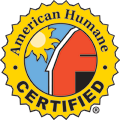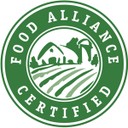Savvy Consumer: Deciphering Egg Labels

Confused by what all the labels on egg cartons are telling you? In this final installation of dietetic intern Amy Vu’s Savvy Consumer series, Amy helps decipher the myriad labels found on egg cartons.
In the past, eggs received a bad reputation for their high cholesterol content. Recently however, since studies show that dietary cholesterol has little impact on blood cholesterol levels (especially compared to saturated fat), the cholesterol in eggs should not be as much of a concern for most people.
Eggs can be an affordable source of complete protein and contain essential vitamins such as choline, carotenoids, and B vitamins. However, the conditions in which hens are kept can impact the nutritional quality of the egg, the environment, and the health of the farmer. Because of this, eggs are one of the most labeled foods in the grocery store. So before putting eggs into your basket, consider the implications of these different labels.
Common Egg labels
-
Cage-Free: Cage-free means that chickens are not kept in small battery cages, however it does not guarantee that the chickens spend any time outside. Cage-free chickens are allowed to roam freely in a large but likely crowded enclosure and may never see the outdoors. There is minimal regulation of the diameter of space allotted per chicken and the chickens may or may not have enough room to spread their wings and engage in natural behavior such as dust-bathing and foraging. Beak removal is a common practice to prevent fighting in overcrowded aviaries.
-
Free-Range/Roaming: Regulated by the USDA, free-range chickens have continuous access to the outdoors during a chicken’s egg-production cycle. Keep in mind, the key phrase here is “outdoor access.” This term does not regulate the amount of time spent outdoors or how much outdoor space is provided. The doors could be barely accessible to the chickens or could lead to an outdoor area of bare dirt or concrete.
-
Pasture-Raised: Although the label is unregulated, pasture raised hens theoretically are cage-free and free-range AND spend time on a pasture. The chickens are able to forage for insects and worms in the pasture and generally have enough space to engage in natural behaviors. One study shows that pasture-raised eggs are higher in Vitamin A, E, and omega-3 fatty acids compared to commercially raised hens. Since the USDA has not developed a definition for this term, so it is important to research brands at your local grocery store to ensure the hens are allowed adequate time allowed outdoors.
-
Organic: As defined by the USDA, organic eggs come from hens that are free-range, fed an organic diet, and receive no antibiotics or growth hormones. Depending on the life of the chickens, there may be few nutritional differences between conventional and organic eggs but with fewer antibiotics used and organic feed, organic eggs are better for the environment.
-
Vegetarian Fed: The cycle of feeding animals to animals in industrial farming raises the risk of concentrating toxins and the transfer of disease. Therefore, organic chicken feed cannot contain animal byproducts. However, what sounds like chickens gobbling up greens could actually be chickens getting fed a poor diet composed of mostly soy and corn. Chickens are actually omnivores and inherently feed on insects and worms. Without supplementation, vegetarian diets can be deficient in the essential amino acid methionine and chickens can get sick.
-
Omega-3 Enriched: This typically means that the chicken feed contains flaxseed to increase the omega-3 value of the egg. While eggs from pastured chickens may contain more omega-3s, non-pastured birds need supplementation to achieve higher amounts of omega-3 fatty acids. Generally, the egg carton must state the amount of omega-3 fats contained in the eggs.
-
All Natural, Farm Fresh: Phrases like ‘all natural’ and ‘farm fresh’ are used as marketing strategies to create bucolic images of chickens parading around a small barn. Technically, all chicken eggs can be considered all natural because they contain no added color, artificial flavors or synthetic substances.
Third-Party Certifications
The lack of regulation among labels has prompted third party organizations to create their own standards for the quality of life of the hens, quality of the feed, food safety and environmental regulations. Each organization has their own specifications for cage-free, free-range, and pasture-raised according to the number of hours allowed outside and space per hen. Look out for these labels to purchase cruelty-free eggs.
nutrition advice, cholesterol, sustainability
Latest Posts

October 16, 2018 by Doreen Garelick, Dietetic Intern
Our intern Doreen attended a food waste summit for restaurants and compiled these tips to help food service operators redirect food waste from landfills.
Read more ›
Nutrition 101

Nutrition 101
September 26, 2018 by Doreen Garelick, Dietetic Intern
Ever notice headlines about rapid weightloss? Dietetic Intern Doreen Garelick looks deeper into a recent eye-catching headline to see if there's any truth behind it.
Read more ›






Connect
 Follow us on Twitter
Follow us on Twitter Friend us on Facebook
Friend us on Facebook Follow us on Pinterest
Follow us on Pinterest Follow us on Instagram
Follow us on Instagram Read our Blog
Read our Blog Watch videos on YouTube
Watch videos on YouTube Watch videos on Vimeo
Watch videos on Vimeo Connect with us on Linkedin
Connect with us on Linkedin Find us on Foursquare
Find us on Foursquare
Tweets by @SPEcertifiedBlog Search
Categories
SPE Certified Newsletter
Sign up for news on the latest SPE-certified venues, events and SPE updates.
We will never share your personal information with a third party.